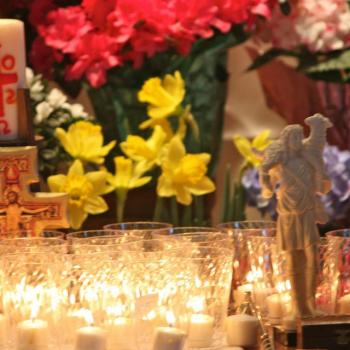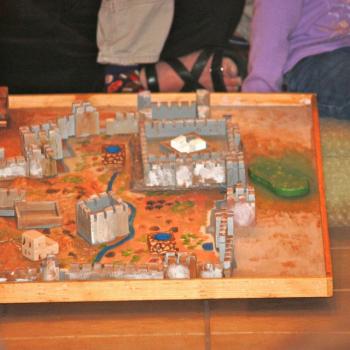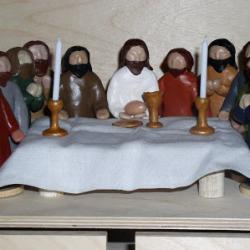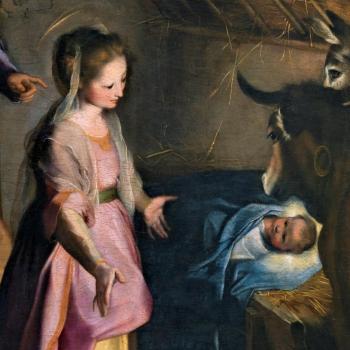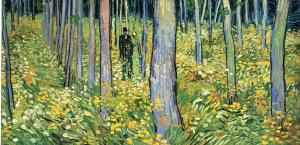
“I tell you the more I think, the more I feel that there is nothing more truly artistic than to love people.”
Vincent Van Gogh
The orderly rows of trees march backward, into the dark and unknown past. They create a kind of scaffolding around the couple, who walk, ankle-deep in the pathless carpet of flowers. The man could almost be mistaken for a tree trunk, except that his position does not align with the rhythmic upward beat of the trees, and his black suit creates an off-center focal point that borrows shadowy weight from the mysterious depths behind this forest grove.
The undergrowth seems to climb and entwine the bodies of this couple, who lean together, arm in arm. The woman’s bright olive dress barely distinguishes her from the verdant ground that might swallow her if she were to stay still for too long. This pair stands out from the crowd of trees and flowers, particularly because the neighboring trunks create a frame, through which we can contemplate their procession into this lush wood.
Van Gogh’s painting, Undergrowth with two Figures, creates the illusion that we can “see” a discreet moment in time. The framing trees function almost like a cinematic length of film, while we viewers glimpse the couple from an oblique position, as they pass between two trees. An instant before, the couple would have been obscured among the trunks, and very soon they will be completely hidden behind the large tree that bisects this painting and serves as concert mistress for the rest of the composition.
The trees also appear, unmistakably, to be columns for a vast outdoor cathedral that rises around this couple; the two enact a kind of wedding with nature as they pass together up the aisle of this roofless, sacred space. Soon, they will continue to the right foreground, which ends abruptly at the lower edge of the canvas, and they will pass over into our own present reality, their nuptial moment. But not without having been changed for good by their saturated walk within the cream and golden blossoms, which have forever claimed them as their own.



